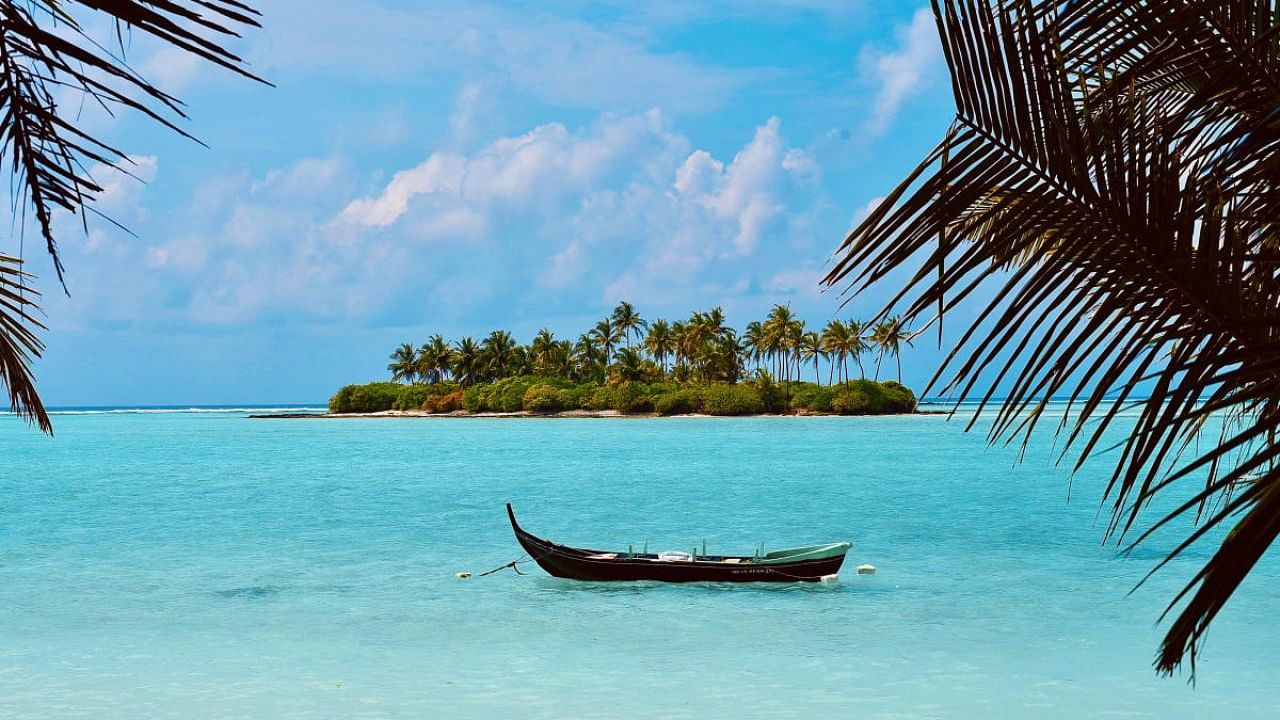
The Union Territory of Lakshadweep is in the news, albeit for all the wrong reasons. The residents of Lakshadweep and political parties have launched a campaign against the ‘reforms’ introduced by the recently named Administrator, Praful Patel. They have alleged that the ‘reforms’ are detrimental to the traditional social, cultural and economic character of the UT.
But while the political situation ashore is on the boil, the security situation in the waters abutting Lakshadweep, the Malabar coast, the Maldives and Sri Lanka seems to have gone unnoticed largely. This region is emerging as a new hotspot.
Lakshadweep is an archipelago of 36 islands that are located some 400 km to the west of Kerala. Of the 36 islands, only 10 are inhabited. The islands have a total land area of just 32 sq km but confer a 400,000-sq km Exclusive Economic Zone (EEZ) on the country.
Lakshadweep, with its predominantly Muslim population, shares linguistic, cultural and religious affiliations with the people of Kerala. The increase in radical Islamist activities in Kerala and along the Malabar coast has often raised security concerns over the possibility of this religious radicalisation spilling over to the islands.
Also read: Lakshadweep MP says Amit Shah has assured draft laws won't be finalised without consulting locals
Post 26/11, there has been a perception in the minds of security agencies that terrorist organisations such as the Lashkar-e-Toiba (LeT) and Jaish-e-Mohammed could exploit the religious sentiments of some disgruntled. Lakshadweep residents and utilise one or more islands as bases to launch attacks on mainland India. With this in mind, joint exercises involving the Indian Navy, Coast Guard and Marine Police, etc., are carried out regularly.
The geographic proximity of Lakshadweep to the Maldives and Sri Lanka further enhances its criticality. The Lakshadweep Islands sit astride the Nine Degree Channel (which separates main Lakshadweep from Minicoy) and the Eight Degree Channel (separates Minicoy from Maldives). Through these channels pass the Sea Lines of Communication along which flows the heavy East-West maritime traffic that keeps the wheels of the global economy turning. India’s location enables her to keep a hawk’s eye on this important artery, but it also has to deal with inherent security implications.
Maldives, which is about 564 km south of Minicoy, is unfortunately already in the grip of Saudi Arabia-funded Wahabism and Pakistan-sponsored radicalisation, which is a cause of grave concern. The recent explosion which injured former Maldivian president Mohamed Nasheed is an indicator of worsening times. China has been active in the Maldives with several projects there and is in occupation of some islands. Despite the regime change in 2018, Maldives, given its precarious finances, will find it difficult to ease China out.
Sri Lanka is a fertile playground for Pakistan and the Easter blasts there in 2020 reportedly had an ISI connection. India’s influence in Sri Lanka has declined considerably in recent times and the 99-year leasing of Hambantota Port and the recent passage of the ‘Colombo Port City Bill’ practically makes China a southern neighbour.
In terms of maritime threats, incidents of Somali piracy which had manifested in the vicinity of Lakshadweep a few years ago has reduced considerably. However, in March this year, the Indian Coast Guard intercepted three Sri Lankan fishing boats about 90 nautical miles south-west of Minicoy and seized 300 kg of heroin, five AK-47 rifles and 1,000 rounds of ammunition from the boats. Thereafter, in April, INS Suvarna intercepted a Sri Lankan boat west of Lakshadweep with heroin worth Rs 3,000 crore onboard. These seizures could well be just the tip of the iceberg. The consignments had reportedly originated from the Makaran coast and, after a mid-sea transfer, could have been destined for India, Sri Lanka or the Maldives.
It is a well-known fact that drug smuggling channels can be used for other nefarious activities, including terrorism. Hopefully, the NSA-led ‘Trilateral Intelligence Sharing Dialogue’ between India, Sri Lanka and Maldives which took place in Colombo in November 2020 discussed these issues.
In a strategic sense, the islands are a crucial maritime bastion which protect our south-western flanks from maritime threats, especially of the asymmetric variety. They also extend our maritime reach further into the south-western Indian Ocean. However, there has not been much force accretion in Lakshadweep in recent years, possibly due to a continuously declining defence budget.
The navy had set up an establishment called INS Dweeprakshak on Kavaratti Island in 2012. In addition, there are three naval detachments, one each on the islands of Kavaratti, Minicoy and Androth. Further, the Indian Coast Guard has a base on Kavaratti. The lone airstrip on Agatti can only handle Dornier-size aircraft and, contrary to what some strategists suggest, does not qualify as an ‘unsinkable aircraft carrier’ yet.
India continues with its efforts to set up strategic infrastructure at Assumption Island in the Seychelles and at Agalega Island in Mauritius and carries out EEZ patrol in the waters of both these countries in accordance with her vision of being a ‘Net Security Provider’ in the Indian Ocean Region. But what happens closer home and at our doorsteps is equally important. India and Sri Lanka will need to enhance surveillance and patrolling on their respective sides of the International Maritime Boundary Line, emanating from the Gulf of Mannar.
The Centre will need to move fast and address the genuine grievances of the islanders, if any, since vested interests may be at play and the internal security situation should not be allowed to slip out of control. Similarly, the waters around Lakshadweep and the southern tip of the country are in a churn and India must ensure that no one is able to fish in troubled waters.
(The writer is a former naval officer and is currently a trustee of the Institute of Contemporary Studies, Bengaluru)